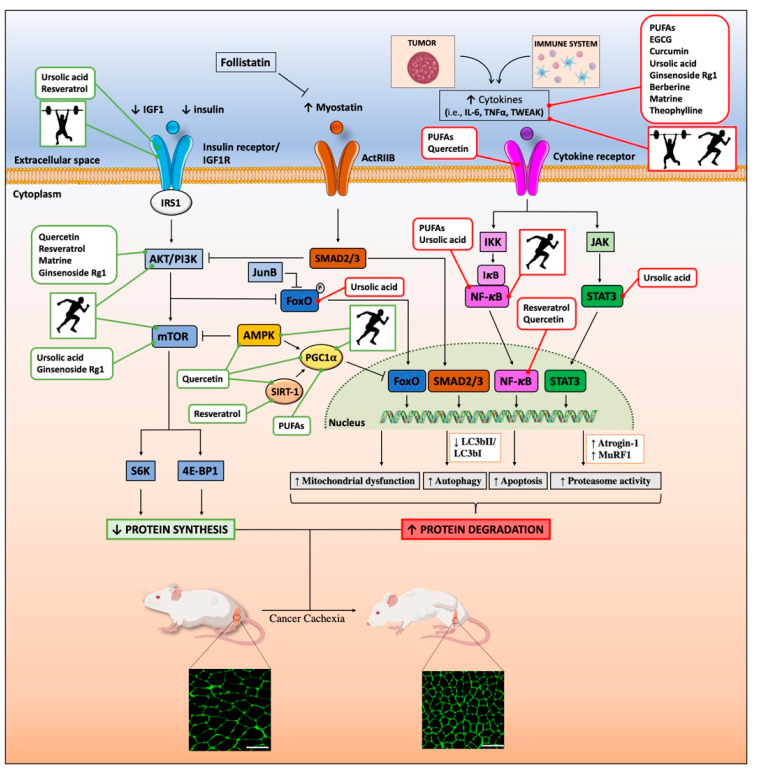Figure 2.
Beneficial effects of nutraceuticals and physical activity against muscle atrophy during cancer cachexia. Graphical representation of the main findings of in vitro and in vivo studies, which have investigated the mechanisms underlying the benefits of the nutraceuticals and physical exercise against muscle wasting during cancer cachexia. In brief, nutraceuticals and physical exercise can favor protein synthesis in muscle by inducing both anabolic (i.e., IGF-1/AKT/mTOR) and anti-catabolic pathways (i.e., AMP-activated protein kinase (AMPK), SIRT1, and PGC1α) (in green). On the other hand, they can limit protein degradation by inhibiting pro-catabolic pathways (i.e., FoxO3, SMAD2/3, and NF-κB) (in red), thus limiting the expression of genes involved in mitochondrial dysfunction, autophagy, apoptosis, proteasomal degradation, and inflammation. The running man and the weightlifter represent “endurance/aerobic” and “resistance/strength” trainings, respectively. A transversal section of a tibialis anterior stained for wheat germ agglutinin (WGA) and coming from a healthy and a colon adenocarcinoma 26 (C26)-bearing mouse are shown. Scale bar: 100 μm.

